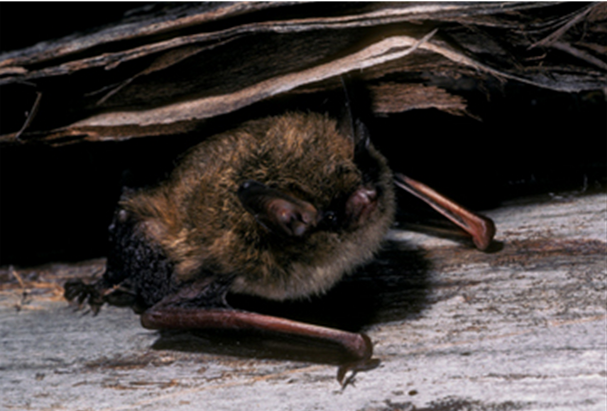The Alabama Department of Conservation and Natural Resources (ADCNR) reported on Wednesday that it has discovered a breeding population of endangered northern long-eared bats in Coastal Alabama.
The ADCNR reports that biologists with the Wildlife and Freshwater Fisheries (WFF) Division, the U.S. Fish and Wildlife Service (USFWS), and the Alabama Bat Working Group (ABWG) discovered a breeding population of the endangered bats during the ABWG’s annual Bat Blitz – an event held in a different location of the state each year to inventory the local bat populations.
This year’s Bat Blitz took place in Baldwin and Mobile counties in May 2023. On the last day of the event, one male and two pregnant female northern long-eared bats were captured and released on a Forever Wild Land Trust tract within the Perdido River Wildlife Management Area (WMA) in Baldwin County. Prior to the 2023 Bat Blitz, the species had never before been documented in southwest Alabama.
Chris Blankenship is the ADCNR Commissioner and the Chairman of the Forever Wild Land Trust Board of Trustees.
“The Department of Conservation and Natural Resources has been intentional about acquiring land along the Perdido River corridor to add to the land that currently encompasses the Perdido WMA,” said Commissioner Blankenship. “The discovery of this endangered species in the area we are working to protect is further evidence of the importance of this land in eastern Baldwin County.”
Discovering the bats surprised the scientists.
Nick Sharp is Alabama’s bat biologist.
“We focused our efforts in coastal Alabama after the discovery of northern long-eared bats in coastal North Carolina and South Carolina,” said Sharp. “This discovery is significant as there are no caves in these locations and the bats apparently do not hibernate. Rather, they are active year-round and therefore not exposed to white-nose syndrome.”
The small bats (.2-.4 ounces) prey on insects. Coastal Alabama is unique in that it is so warm that the bats insect can survive and be active virtually year round. In more northern areas of the country and Canada the bats have nothing to prey on in the colder months leading to them having to hibernate in caves. The northern long-eared bat has a medium-sized body measuring 3 to 3.7 inches in length and a wingspan of just 9 to 10 inches. It’s back fur is medium to dark brown and the fur on its underside is tawny to pale-brown. Compared to other bats in the genus Myotis, this bat is distinguished by its long ears.
White-nose syndrome (WNS) has been devastating for bat populations. Northern long-eared bats were once one of the most common bats in eastern North America but the species has been decimated by WNS – a deadly fungal disease that affects hibernating bats. According to the USFWS, WNS has caused declines of 97 to 100 percent in affected northern long-eared bat populations. Due to extreme population declines, the northern long-eared bats were listed as endangered under the Endangered Species Act in 2022.
In June 2023, a second effort was made to catch additional northern long-eared bats at the Perdido River WMA with the goal of locating a maternity colony. This attempt resulted in the capture of another male and a lactating female, indicating the female had given birth in the area.
“The bats were fitted with radio-tags in an attempt to track them to their daytime roost, but the effort was unsuccessful,” Sharp said. “However, the ability to return to the site and catch more northern long-eared bats substantiates a resident, breeding population in the area. Coastal Alabama can be added to the list of locations where these bats may survive white-nose syndrome.”
As the norther long-eared bats are federally protected it is illegal to kill, capture, or interfere with the bats’ activities in any way.
Alabama’s bats are insectivores and provide a great economic benefit to the people of Alabama, consuming millions of crop pests each evening. Scientists estimate the pest control services provided by bats in the United States exceed $3 billion a year.
To connect with the author of this story or to comment, email brandonmreporter@gmail.com.
Related
Share via:














